#La Flora Tarot
Text
I’ve rotated my tarot/oracle decks to my *spring* collection! These give all the floral and new beginning vibes. Which one is your favorite?
Source | https://www.instagram.com/mariathearcane/
-Decks-
Tarot of the Drowning World @kahnselesnick
Botanical Inspirations @usgamesinc
Alice & Wonderland @insighteditions
Seed & Sickle @liminal_11
The Herbalcrafters Tarot @usgamesinc
La Flora Tarot @lafloratarot
Tarot de Carlotydes @carlotydes
#witch#witchcraft#witchblr#witchy#magick#witchcore#witches#spells#witches of tumblr#witchy decor#spellwork#witchy aesthetic#pagan#witches altar#altar decor#tarot#hedge witch#ostara#spring equinox
71 notes
·
View notes
Photo
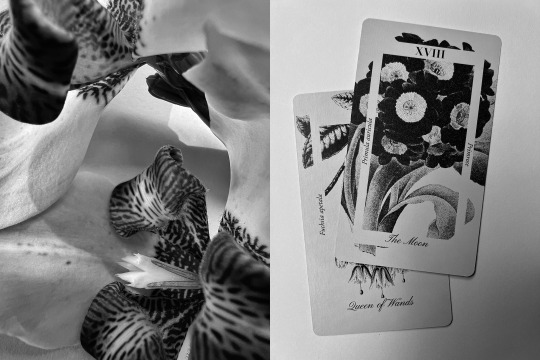
Your body knows things that you don’t 🥀
The Queen of Wands followed by The Moon can be a sign of inner conflict. The Queen of Wands represents a passionate, creative, and independent personality. However, The Moon can indicate uncertainty, confusion, and fear. Together, they suggest struggle with inner desires and emotions, leading to a feeling of being lost or unsure. It's an opportunity to examine fears, face them with courage, and embrace your true self.
*Go for walks
*Don’t ignore your intuition
*Embrace inner passions
Souvenir from morning run: Trimezia northiana, Walking Iris
*
La Flora Tarot is a deck for plant lovers. Follow for daily readings from the deck creator.
#tarot reading#lafloratarot#dailyreading#themoon#queenofwands#indiedeck#tarotdeck#botanicaltarot#botanical drawing
2 notes
·
View notes
Text
algo mejor 09/12/22
suenan los ratones, su show en obras es en ocho días.
estoy dibujando, robando un dibujo ajeno de una chica mexicana, como la cerveza que probé de bill hoy, y se que esta bestia no llego a mi vida para estar por corto tiempo
hoy treinta y dos años y LA MISMA repetición, los mismos miedos inutiles
porque el miedo, es sano, y puede ayudar mucho a generar una cautela o un impulso a enfrentarse a uno mismo.
yo tengo miedo, y no quiero enfrentar nada, quiero encerrarme, taparme con mil toallas o colchas como en invierno de hospitales.
talvez pueda ser fiel a MIS propios consejos y hacer caso a aquella frase: ELIGE TUS BATALLAS.
Y si esta no es MI batalla? y si yo sí puedo ser feliz y desligarme de este cuerpo para escribir acerca de otros y no DEL OTRO
Podemos inventar una puerta donde no la HABIA
me pregunto
y desde hoy hasta los ratones ir a por el deseo sin perder la cordura o la brújula interna
nunca el control
pero sí ser. sí ser sí.
Mañana, cena asturias? seria muy sano y seria alegria. si es asi definir tema sabado 17
Domingo, algo tengo pero no recuerdo ahora, o será que no tengo nada? sí debo entregar mi ilustración de MIDSOMMAR
Lunes, impresión de tarot, trabajo, lo de siempre, correr, caminar, helado, sol, yoga, CAMBIAR DOLARES, Comprar regalo madre. CAMARA A ARREGLAR PARA JUEVES Y NAVIDAD
Martes, Juega la selección y no llueva esta vez. Paso a paso.
Miercoles, cuadro y marco definido para llevar a la muestra, impresiones cortadas, camara service lista
Jueves, muestra, mañana de trabajo y por la tarde a bulles moebius a exponer a las 17hs, estar bien y en paz seria un golazo, estarán die checho fede celu y los del taller, respirar. no soy buena dibujando y eso me da alegria
Viernes, trabajo y 15hs en barrio chino a ver a Flora, paz o a paz o
Sabado, se dara lo de celu? si funciona, ok, y sino dia pacifico hasta la hora en que toca Juanse.
Domingo, la final.
0 notes
Photo

The Lovers. Art by Iara Côrtes, from La Flora Tarot.
38 notes
·
View notes
Photo
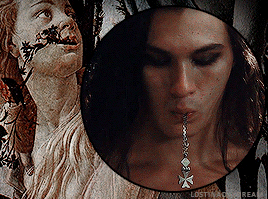

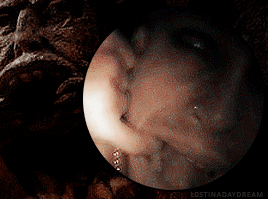
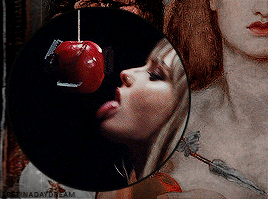
IWBYS music video | interpretation - pt8/8
↳the mouth & other symbolic imagery
«The mouth utters the word, the sign, and symbol. If the word is a sign, it means nothing. But if the word is a symbol it means everything.»― Carl Jung
First of all, this is my personal interpretation. I’m not in the director/band minds so these are just the associations I made while watching the video.
Secondly, English is not my native language so... sorry for any mistakes.
[1]
The cross necklace coming out Ethan’s mouth could represents the rejection of constricting ways of thinking or being fed them ( if we consider the necklace to go in ) and ,since the cross also stands for ‘redemption’, it could just be about them ‘’repenting’’ ( it is in fact shown during the rewind to try to go back ‘to innocence’ ).
[2]
I know what they were ‘hinting’ at with Thomas bound upside down but I can’t help but also think of the tarot card “the Hanged Man”.
The card symbolizes, among other things, gaining a new perspective.
[3]
Damiano’s choice to pull his mouth on the verse «cause I just wanna amuse ya» creates a ‘grotesque’ imitation of a smile (that fits the horror-ish atmosphere of the scene) and, while he's just miming it, playing with the lyrics as always when he performs, it reminded me of those exaggereted and plastic expressions we can find in gargoyles ( guardians to ‘’ward off ‘evil-forces’’’ according to some and ‘’embodiments of the souls condemned to hell’’ for others or again ‘simple stone monsters’) the so called ‘mouth pullers’, specifically.
[4]
Vic licking the apple can represents a taste of...
- sin (see pt1)
- love & desire ( one of the attributes associated with Venus, the apple is used as a symbol of sensuality and love since time immemorial. To give an apple to another person in the past meant to declare your love - in mytholgy Bacchus, after creating the apple, offered it to Venus to win her heart).
In the Bible it also appears in the Song of Solomon [2:3] symbolizing sensual desires and beautyness “ As the apple tree among the trees of the wood, so is my beloved among the sons. I sat down under his shadow with great delight, and his fruit was sweet to my taste.“ )
- knowledge & freedom ( another symbolic meaning of the apple is knowledge and wisdom. Also, if we cut one orizzontally, we'll see the shape of a five pointed star in its center that is said to represent "the knowledge that makes you free" -- and I can't help but think of the scenes where they play with the white star on the wall, as if it represents what's inside that apple with razors = them just being themselves and having fun - free.)
___
[1] detail from la Primavera by Botticelli - Chloris, with a chain of flowers and plants coming out from her mouth, transforming into Flora .
[4] detail from Venus Verticordia by Dante Gabriel Rossetti.
#måneskin#maneskin#maneskinedit#damiano david#victoria de angelis#ethan torchio#thomas raggi#iwbys video#mine:iwbys interpretation#last one#mine: må#mystuff
46 notes
·
View notes
Photo

Aradia
Many Italian witches believe in the historical existence of a woman named Aradia, who brought about a revival of Italian Witchcraft. She is often called the Holy Strega or The Beautiful Pilgrim. In the oral traditions surrounding Aradia, residing in the Old Religion of Italy, it is said that she lived and taught during the later half of the 14th century. The Italian Inquisitor Bernardo Rategno documented in his Tractatus de Strigibus (written in 1508 AD.) that a "rapid expansion" of the "witches sect" had begun 150 years prior to his Time. Rategno studied many transcripts from the trials of the Inquisition concerning Witchcraft.
Tracing back over the years, he pin- pointed the beginnings of the witch trials, and noted their sharp increase over a period of years. Following a thorough study of these records (kept in the Archives of the Inquisition at Como, Italy) Rategno fixed the time somewhere in the mid to late 14th century. If Aradia had been born in 1313, as the legends claim, this would certainly have made her old enough to have taught and influenced others, and for groups to have formed that carried on her teachings. In 1890, author and folklorist Charles Leland published a book on Italian Witchcraft titled Aradia; Gospel of the Witches.
Leland's account of Aradia includes a legend about the "beautiful Pilgrim" preserved among Tuscan peasants for generations. In part this legend says: "Then having obtained a pilgrim's dress, she traveled far and wide, teaching and preaching the religion of old times, the religion of Diana, the Queen of the Fairies and of the Moon, the goddess of the poor and the oppressed. And the fame of her wisdom and beauty went forth over all the land, and people worshipped her, calling her La Bella Pellegrina (the beautiful pilgrim)." In 1962, T.C. Lethbridge (former Director for Cambridge University Museum of Archaeology and Ethnology) published a book called Witches, which does refer to Aradia in several chapters
In Chapter 2, Lethbridge writes: "We can then, I think, assume that Leland's Vangelo and Dr. Murray's trial evidence are more or less contemporary and that it is reasonable to use the two together to form a picture of the witch cult at about A.D.1400... Aradia was sent to earth to teach this art to Mankind. That is, she was, in the opinion of her devotees, a personage, known in Hindu Religion as an Avatar, who taught them how to harness magic power. Aradia, at some far-off time, may have been as much an historical person as Christ, Krishna or Buddha..." It is also interesting to note that Ecstascies - Deciphering the Witches' Sabbath, by Carlo Ginzburg, contains a passage that may be a historical reference to Aradia. On page 189 he speaks of a Pagan Sect known as the "Calusari" who, during the Middle Ages (as late as the 16th and 17th Centuries), worshipped a Mythical Empress who they sometimes called "Arada" or "Irodeasa."
The Calusari also used the term "mistress of the fairies" for her, just as the followers of Aradia called Diana the Queen of the Fairies. Could this sect have still been practicing a form of worship initiated by Aradia over 100 years prior? According to the original legend of Aradia, she left Italy at some point in her Quest and traveled out of the country. Serbia, the home of the Calusari, lies a short distance across the Adriatic from Central Italy, and travel by ship was not uncommon in that Era. When Aradia left Italy she would not have traveled west to France because the Papacy was still established in France at the time, and Aradia was still being hunted by the Church. It would have been too dangerous to have gone to northern Europe because witches were being burned or hanged in that Region (Italy did not begin the burning of witches until after the time of Aradia). So in fact an eastern exodus would have been the only logical action which Aradia could have taken. At the very least, there is a striking coincidence between Aradia's witches and the Calusari of Arada.
In the late 12th century, Joachim de Flora (also called Joachim de Fiore) the Abbot of Corazzo wrote a prophetic text on the Age of Reason. His writings had a major influence on religious thought throughout the remainder of the Middle Ages. He passed his writings on to the Holy See in 1200 for approval. Concerning the Age of Reason to come, Joachim wrote:
"The Old testament period was under the direct influence of God the Father. With the advent of Christ came the age of God the Son. The time was now ripe for the reign of God the Holy Ghost. A new era was being introduced, a culmination; in the new day man would not have to rely on faith for everything would be founded on knowledge and reason."
The year 1300 was declared a Jubilee Year by Boniface VIII. It was also the year that Dante had his "vision: of Inferno Panderers." A sect known as the Guglielmites believed that a certain woman named Guglielma of Milan was the incarnation of the Holy Spirit and wished to establish a church with a female pope and female cardinals. Millennialism has frequently provided a basis for social progress regarding women. Women have historically taken very active and creative roles in millennial groups, even in societies where their voices would normally have been repressed such as that of Guglielma of Milan.
Manfreda Visconti was elected by the Guglielmites to be their papess. She was burnt at the stake in 1300. The year 1300 was to usher in a new era of female popes with Manfreda officiating a mass at Ste. Maria Maggiore. Guglielma was in reality, Princess Blazena Vilemina, daughter of the King of Bohemia. She was born in 1210 and appeared in Milan around 1260 and reportedly died on August 24, 1281. She appeared in Milan dressed as a "common-woman." Because of her noble background, she attracted followers from both the Visconti family as well as the Torriani family, noble rivals of the time, and was seen as a "peacemaker" between the families. There is some conjecture that she might have been influenced by the sisters of the "Free Spirit", a very prominent heretical group of the time, that preached the teachings of Joachim.
Guglielma's chief disciple, a man by the name of Andrea Saramita, said that he heard her make claims to "divinity." He was a rather well-off-layman, well versed in the teachings of Joachim about the Age of the Spirit. He wrote most of the documents and was the chief theologist of the sect.
Maifreda da Pirovano, cousin of Matteo Visconti, was the chief of the Guglielmite sect. Maifreda was actually granted the title of pope, vicar of the Holy Spirit upon earth, by the sect, and supposedly, it is her portrait that is the Papessa of the Visconti Tarot deck. Of the approximately 30 members of the sect from about 7 Milanese families, women outnumbered men, but 10 of the most fervent members were male. The sect had an interesting social life in which there was equality of the genders. There was no emphasis on virginity in the sect, though a good number of the female members were widowed or unmarried. What is interesting, is that the members of the sect crossed social boundaries. There were very wealthy people involved, as well as poor servants. Membership ranged from the ruler's son, Galeazzo Visconti to the poor seamstress Taria and the serving maid Bianca. On the ground that Guglielma had wanted her devotees to remain together as a family, they held frequent commemorative meals in her honor. Reportedly there were attempts throughout the 1300's to continue the remembrance of Guglielma, by hiding her in paintings and calling her by another name.
This theme, of a female messiah, a commemorative meal, and a coming Age of Reason may well have laid the foundation for the legends surrounding Aradia. At the very least it demonstrates that such a theme was known in Italy during the early 14th century. The pre-existence of such a theme later appearing in the Aradia material, lends credence to the Streghe legends, thus providing some historical foundation for its logical appearance in Old Italy.
According to legend, Aradia was born in 1313 in northern Italy, in the town of Volterra. She gathered a small band of followers and went about the countryside teaching and preaching the Old Religion of Italy. Aradia spoke of an Age of Reason that would come, and which would replace the Age of the Son. When she departed, Aradia requested that a meal be held in her honor, and that she be remembered by future generations.
http://www.stregheria.com/aradia.htm
artist: Master Study – Italian Girl Drawing Water by DBoland2012 on DeviantArt
#witch#witchcraft#witchcraft for beginners#aradia#goddess#italy#strega#Strega witch#stregheria#witch wisdom
4 notes
·
View notes
Photo
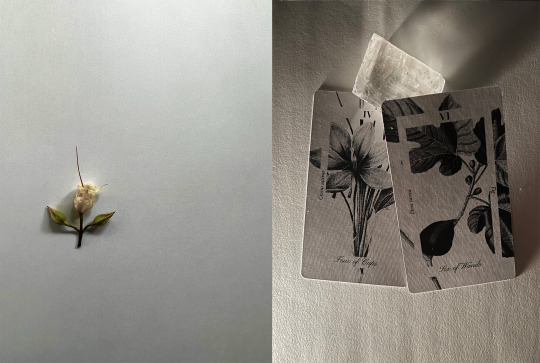
A heartbeat away from the miraculous 🥀
The Four of Cups followed by the Six of Wands can be a sign of dissatisfaction leading to success. The Four of Cups represents a sense of boredom and apathy, while the Six of Wands symbolizes triumph and recognition. Together, they suggest that we may be feeling stagnant or unfulfilled, but it can lead to a drive for accomplishment.
To achieve success, we must learn to appreciate our blessings and seek out new challenges with a sense of purpose and determination.
* Do not disguise your struggle
* Greet yourself arriving at your own door
* Remember even our smallest actions have potential for great change
Souvenir from morning run: Podranea ricasoliana, Pink trumpet vine
*
La Flora Tarot is a deck for plant lovers.
Follow for daily readings from the deck creator.
🥀 New ‘round here? Welcome. Join for free. Don’t miss a reading.
0 notes
Text

J'ai la joie de vous annoncer le vernissage de la nouvelle exposition "Sorcières & Chamanismes", le vendredi 13 Décembre à la Galerie La Papesse. Cette soirée ouvre le trimestre de l'hiver sous le signe de la traversée des mondes. De nombreux événements sont à venir en lien avec cette thematique: rituels performatifs et therapeutiques, soins et stage chamaniques, soirée spéciale "Oracle de Belline", concerts acoustiques à la bougie, ateliers de sorcières (écriture, plantes et tarot...) Je vous donne rendez vous le vendredi 13 Décembre à 19h! Avec: Marie Ausina (Installation). Alison Flora (Peinture, illustration). Mika Pusse (Sculpture) Sacha Bernardson (Art video & Installation sonore) +performance, concert
0 notes
Photo
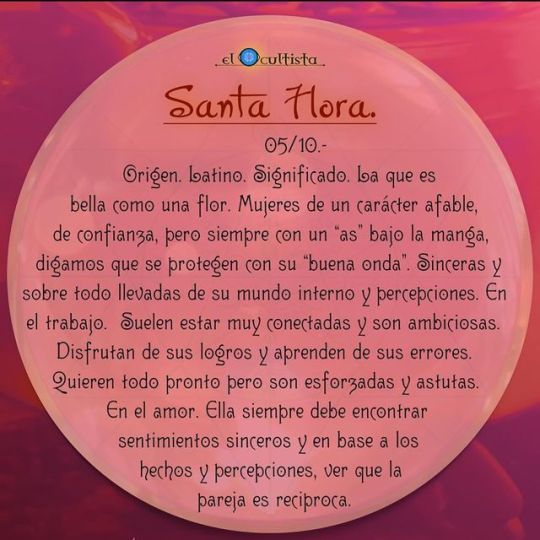
#felicidades en tu #santo #flora . #5deoctubre . #origen . Latino. #significado . La que es bella como una flor. #personalidad #mujeres de un carácter afable, de confianza, pero siempre con un “as” bajo la manga, digamos que se protegen con su “buena onda”. Sinceras y sobre todo llevadas de su mundo interno y percepciones. En el #trabajo . Suelen estar muy conectadas y son ambiciosas. Disfrutan de sus logros y aprenden de sus errores. Quieren todo pronto pero son esforzadas y astutas. En el #amor . Ella siempre debe encontrar sentimientos sinceros y en base a los hechos y percepciones, ver que la pareja es reciproca. @tarotelocultista { #tarot #runas #reiki #gemoterapia #quiromancia #numerologia #medium #canalizaciones #angeles #terapias #terapiasalternativas #horoscopo #etiquetaatusamigos #significadodenombres #nombresdeniña #nombre #santoral #santodeldia } (en Providencia, Santiago De Chile) https://www.instagram.com/p/B3OG0fPJm1S/?igshid=ynq8v7lwv8hc
#felicidades#santo#flora#5deoctubre#origen#significado#personalidad#mujeres#trabajo#amor#tarot#runas#reiki#gemoterapia#quiromancia#numerologia#medium#canalizaciones#angeles#terapias#terapiasalternativas#horoscopo#etiquetaatusamigos#significadodenombres#nombresdeniña#nombre#santoral#santodeldia
0 notes
Photo

The Fool. Art by Iara Côrtes, from La Flora Tarot.
11 notes
·
View notes
Photo
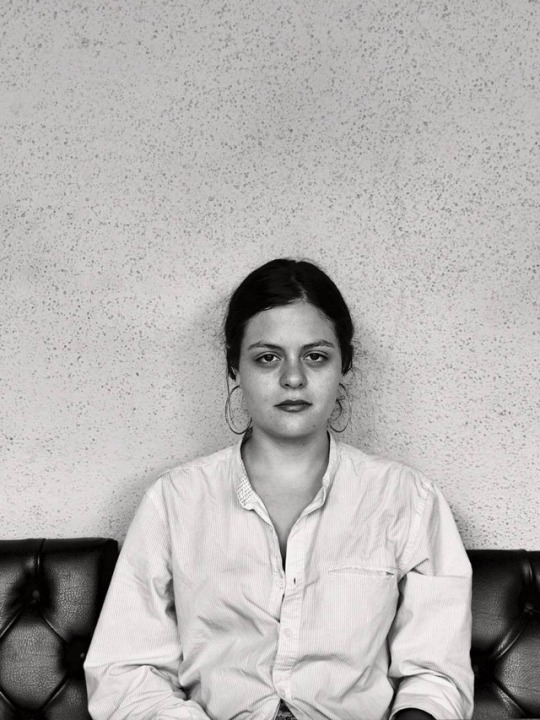
Participante Curar/Crear
Inés Arango (Bogotá, 1993)
Llegué al arte desde la escritura, con la certeza de que estudiar arte sería la carrera menos adoctrinante. A veces pienso que estuve en lo cierto, a veces pienso que no. Estudié Arte en La Universidad de Los Andes con énfasis en proyectos culturales. Desde el inicio de mis estudios artísticos, he estado enfocada en la curaduría y la gestión. Con ese enfoque he dedicado gran parte de los años recientes a formular y producir proyectos curatoriales independientes y a ganar experiencia en el ámbito de la gestión cultural. En mi proceso ha sido importante explorar diferentes sectores de la práctica en gestión de las artes, desde trabajar en espacios independientes (FLORA ars+natura), hasta galerías comerciales (León Tovar Gallery), hasta concebir y gestionar un proyecto propio (Liberia-Central Contemporánea), trabajar para espacios artísticos en instituciones educativas (Sala de Proyectos de la Universidad de Los Andes), hasta entender las dinámicas de educación artística y manejo de públicos en una gran institución (Museos del Banco de la República). Llegué al arte desde la escritura, y la he podido explorar a través de la curaduría sin limitaciones académicas, con unos visos versátiles de gestión y de contacto con artistas, montajistas, galeristas, profesores. Me gusta la versatilidad. Leo el tarot y creo en la verdad del azar. Creo conjuntos como los de las barajas porque mi pensamiento tiende a ser disperso.
1 note
·
View note
Video
vimeo
B E A U T Y - dir. Rino Stefano Tagliafierro
OBRAS DE ARTE / ARTS
Asher Brown Durand – The Catskill Valley
Thomas Hill – Emerald Bay, Lake Tahoe
Albert Bierstadt – Among the Sierra Nevada Mountains
Ivan Shishkin – Forest edge
James Sant – Frau und Tochter
William Adolphe Bouguereau – L’Innocence
William Adolphe Bouguereau – Song of the Angels
Ivan Shishkin – Bach im Birkenwald
William Adolphe Bouguereau – Le Baiser
William Adolphe Bouguereau – Nature’s Fan- Girl with a Child
William Adolphe Bouguereau – The Motherland
Ivan Shishkin – Morning in a Pine Forest
William Adolphe Bouguereau – The Nut Gatherers
William Adolphe Bouguereau – Two Sisters
William Adolphe Bouguereau – Not too Much to Carry
Thomas Cole – The Course of Empire: Desolation
Martinus Rørbye – Entrance to an Inn in the Praestegarden at Hillested
William Adolphe Bouguereau – Sewing
William Adolphe Bouguereau – The Difficult Lesson
William Adolphe Bouguereau – The Curtsey
William Adolphe Bouguereau – Little Girl with a Bouquet
Claude Lorrain – Pastoral Landscape
William Adolphe Bouguereau – Cupidon
William Adolphe Bouguereau – Admiration
William Adolphe Bouguereau – A Young Girl Defending Herself Against Eros
William Adolphe Bouguereau – Dawn
William Adolphe Bouguereau – L’Amour et Psych
William Adolphe Bouguereau – Spring Breeze
William Adolphe Bouguereau – The Invation
William Adolphe Bouguereau – Nymphs and Satyr
William Adolphe Bouguereau – The Youth of Bacchus
William Adolphe Bouguereau – The Birth of Venus
William Adolphe Bouguereau – The Nymphaeum
Gioacchino Pagliei – Le Naiadi
Luis Ricardo Falero – Faust’s Dream
Luis Ricardo Falero – Reclining Nude
Jules Joseph Lefebvre – La Cigale
John William Godward – Tarot of Delphi
Jan van Huysum – Bouquet of Flowers in an Urn
Adrien Henri Tanoux – Salammbo
Guillaume Seignac – Reclining Nude
Tiziano – Venere di Urbino
Louis Jean François Lagrenée – Amor and Psyche
Correggio – Giove e Io
François Gérard – Psyché et l’Amour
John William Godward – Contemplatio
John William Godward – Far Away Thought
John William Godward – An Auburn Beauty
William Adolphe Bouguereau – Flora And Zephy
Louis Jean François Lagrenée – Amor and Psyche
Fritz Zuber-Bühle – A Reclining Beauty
Paul Peel – The Rest
Guillaume Seignac – L’Abandon
Victor Karlovich Shtemberg – Nu à la peau de bete
Pierre Auguste Cot – Portrait Of Young Woman
Ivan Shishkin – Mast Tree Grove
Ivan Shishkin – Rain in an oak forest
William Adolphe Bouguereau – Biblis
William Adolphe Bouguereau – Elegy
Marcus Stone – Loves Daydream End
William Adolphe Bouguereau – Head Of A Young Girl
Hugues Merle – Mary Magdalene in the Cave
Andrea Vaccaro – Sant’Agata
Jacques-Luois David – Accademia (o Patroclo)
Michelangelo Merisi da Caravaggio – San Giovanni Battista
Roberto Ferri – In Nomine Deus
Michelangelo Merisi da Caravaggio – Cristo alla colonna
Michelangelo Merisi da Caravaggio – Incoronazione di spine
Paul Delaroche – L’Exécution de lady Jane Grey en la tour de Londres, l’an 1554
Michelangelo Merisi da Caravaggio – Decollazione di San Giovanni Battista
Michelangelo Merisi da Caravaggio – Sacrificio di Isacco
Guido Reni – Davide e Golia
Michelangelo Merisi da Caravaggio – Giuditta e Oloferne
Michelangelo Merisi da Caravaggio – Davide e Golia
Michelangelo Merisi da Caravaggio – Salomè con la testa del Battista
Michelangelo Merisi da Caravaggio – Davide con la testa di Golia
Jakub Schikaneder – All Soul’s Day
Michelangelo Merisi da Caravaggio – San Gerolamo scrivente
Guido Reni – San Gerolamo
Pieter Claesz – Vanitas
Gabriel von Max – The Ecstatic Virgin Anna Katharina Emmerich
William Adolphe Bouguereau – Portrait of Miss Elizabeth Gardner
Jan Lievens – A young girl
Johannes Vermeer – Portrait of a Young Girl
Luis Ricardo Falero – Moonlit Beauties
Joseph Rebell – Burrasca al chiaro di luna nel golfo di Napoli
Luis Ricardo Falero – Witches going to their Sabbath
William Adolphe Bouguereau – Dante And Virgil In Hell
Théodore Géricault – Cheval arabe gris-blanc
Peter Paul Rubens – Satiro
Felice Boselli – Skinned Head of a Young Bull
Gabriel Cornelius von Max – Monkeys as Judges of Art
Michelangelo Merisi da Caravaggio – Medusa
Luca Giordano – San Michele
Théodore Géricault – Study of Feet and Hands
Peter Paul Rubens – Saturn Devouring His Son
Ilya Repin – Ivan il Terribile e suo figlio Ivan
Franz von Stuck – Lucifero Moderno
Gustave Doré – Enigma
Arnold Böcklin – Die Toteninsel (III)
Sophie Gengembre Anderson – Elaine
John Everett Millais – Ophelia
Paul Delaroche – Jeune Martyre
Herbert Draper – The Lament for Icarus
Martin Johnson Heade – Twilight on the St. Johns River
Gabriel Cornelius von Max – Der Anatom
Enrique Simonet – Anatomía del corazón
Thomas Eakins – Portrait of Dr. Samuel D. Gross (The Gross Clinic)
Rembrandt – Lezione di anatomia del dottor Tulp
Peter Paul Rubens – Die Beweinung Christi
Paul Hippolyte Delaroche – Die Frau des Künstlers Louise Vernet auf ihrem Totenbett
Elizabeth Jane Gardner Bouguereau – Too Imprudent
William-Adolphe Bouguereau – The Prayer
Michelangelo Merisi da Caravaggio – Amorino dormiente
Augustin Théodule Ribot – St. Vincent (of Saragossa)
Caspar David Friedrich – Abtei im eichwald
0 notes